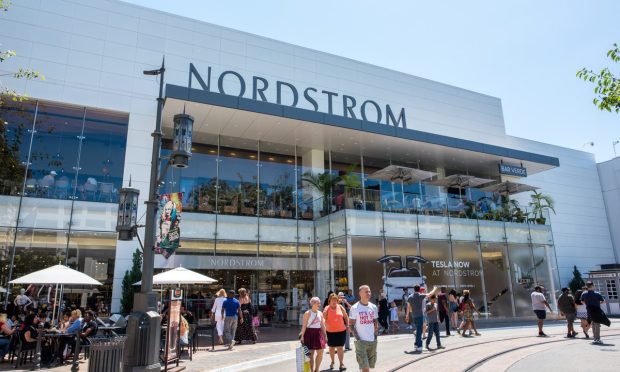Deal Chasers Flock to Nordstrom, but Will They Stay for the Service?

Nordstrom, the retailer once known for luxury and exceptional service, has turned to deep discounts to move inventory, at the expense of lower sales and profits in its fiscal fourth quarter.
The question now is whether the deal chasers who always show up for the deals, will stay for the service and full price merchandise once the promotional sales music stops playing.
Management doesn’t seem convinced. The company expects sales to continue to decline in the new fiscal year and has plans to fold business in Canada, closing all 13 store locations in the country by late June. It has already shut down its Canadian website and only plans to fulfill existing orders. Even sales at its off-price banner, Nordstrom Rack, declined sharply.
Nordstrom has long prided itself for its customer service and personalization, supported by investments in tools and technologies, such as virtual style boards and online styling appointments. The investments have seemingly paid off, with digital customers spending five times more than an average Nordstrom customer.
Despite the investments and high levels of customer engagement, the company’s performance is now beleaguered by excess inventory, according to PYMNTS’ Consumer Inflation Sentiment study, “The False Appeal of Deal-Chasing Consumers.” Seventy-four percent of consumers have cut back on nonessential retail purchases. The shift pushed Nordstrom to discount its merchandise more than expected between the months of November and December so that it could start the fiscal year on the right foot.
“Having a healthier inventory level and mix positions us well to react quickly to changing consumer demand,” Nordstrom President and Chief Brand Officer Pete Nordstrom said in a press release. “Given the continued uncertain environment, we remain focused on executing with flexibility and agility, including conservative buy plans and faster inventory turns.”
The Big Blue Mistake
It doesn’t take much to attract consumers looking for a deal. According to PYMNTS data, 46% of shoppers are deal chasers, and 62% of deal chasers prioritize prices and discounts when it comes to making retail purchases, suggesting that most would shift merchants again for lower prices.
So, it’s easy to understand the rationality behind Bed Bath & Beyond’s famous “big blue” coupons strategy. The retailer is known for its coupons that are sent to millions of households, offering shoppers 20% off their purchases. The strategy — long seen as key to its success — is today regarded as one of the company’s biggest mistakes that has led to its failure.
According to the company’s former president, Arthur Stark, the tactic proved to be a bad long-term strategy.
“Once you’re addicted to it and your customer is addicted to it, it’s a very difficult thing to wean them off of,” he said.
He explained that the company couldn’t successfully reduce its couponing programs without receiving tremendous blowback from its customers.
There is something to be learned from Bed Bath & Beyond’s mistakes for Nordstrom. While heavy discounting might seem appropriate in the short term for moving inventory, it can actually hurt a brand’s positioning.
Nordstrom has positioned itself as a luxury retailer, hosting a wide range of designers from Brunello Cucinelli to Valentino. But the major mistake Nordstrom made was failing to operate on one key luxury tactic — operating on scarcity. By focusing on volume rather than price, the retailer might have been able to leverage the 63% of persuadable retail shoppers and 68% of loyal retail shoppers that have reported to be motivated by factors other than price.
Can Nordstrom Turn the Tide?
That is not to say that Nordstrom cannot fix its mistake. Dillard’s, a family-owned retailer, which operates around 280 stores, mostly in the South, fell into the trap of overbuying and then relying on heavy discounts for clearing inventory before the pandemic.
Fast forward to 2023, and the retailer has succeeded in turning around its business, with inventory levels down 23.5% in the fiscal year that ended Jan. 28, compared with 2019.
The company has seemingly benefitted from a combination of smarter inventory management and personalization, with its employees — many of whom have been with the company for decades — greeting shoppers by their first name.
Today, Dillard’s generates about $6.9 billion in annual sales, and the company has seen its stock climb by more than 1,500% since April 2020.
Taking notes from Dillard’s, if Nordstrom returns its focus back to its core customer rather than focusing on deep discounting for offloading inventory, the company might have a fighting chance to salvage its presence and brand name.
For all PYMNTS retail coverage, subscribe to the daily Retail Newsletter.

